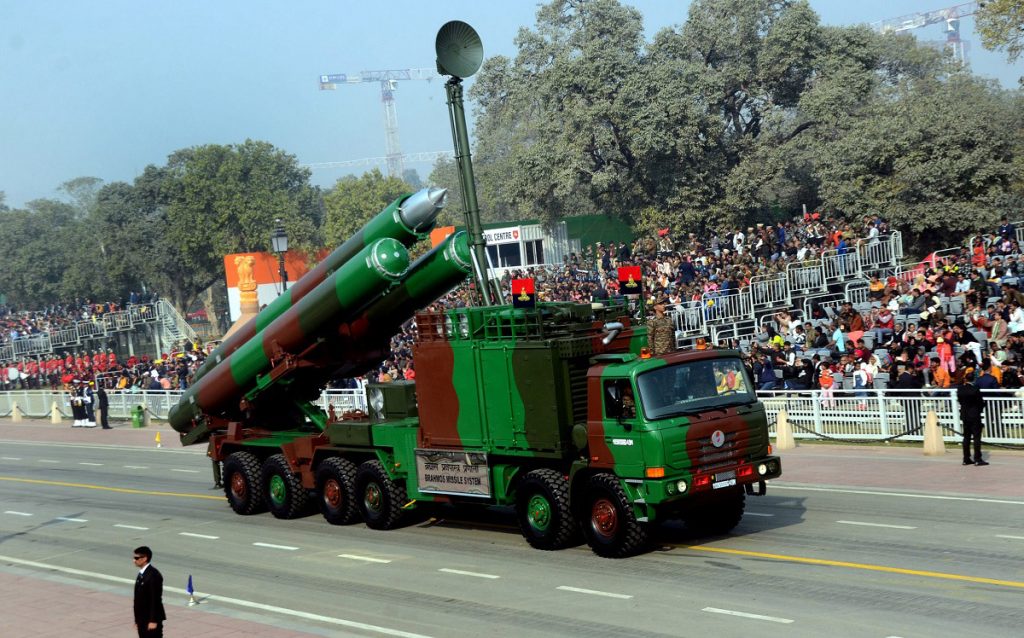India has exported more than Rs 16,000 crore worth of weapons to the various countries in Asia, Africa, and is poised to enter the weapon market of the Latin America. The country aims to cross a five billion USD export target by 2025.
India has achieved a remarkable success by developing the advanced version of Agni-5 inter-continental ballistic missile system capable of carrying nuclear war heads having a range of about eight thousand kilometres. Yet another milestone of the Indian technology in recent weeks has been the successful use of reusable spacecraft. These technological breakthroughs have established that India is not only a high-profile IT power, but has acquired the necessary state-of-the art technologies in the field of manufacturing high-precision armaments, radars, and now a combat aircraft, which could rival its peers in the highly competitive developed and being marketed by the developed world.
India’ weapon systems have already evoked worldwide interests. She has exported more than Rs 16,000 crores worth of weapons to the various countries in Asia, Africa, and now she is poised to enter the highly sensitive and technology-driven weapon market of the Latin American countries. She hopes to cross a five billion USD export target in 2025. Her exports of the military hardware include missiles, the advanced light helicopter (ALH), offshore patrol vessels, personal protective gear, surveillance systems and a variety of radars to a number of countries in Asia, Africa and Latin America.
For many, the five billion USD exports target appear to be a tall order, but with the inclusion of the Light Aircraft, Tejas, and the deadly BrahMos missile system to make available to friendly countries, the export target is expected to be achieved. It may be noted that India is not included in the top 25 countries being led by the USA with 40 per cent share in the global weapons market; therefore, it is natural to doubt the success of this goal. However, the recent responses from various countries for Indian weapons, aircrafts and missiles have created this optimism. In New Delhi, these days, and scores of military attaché of different countries seeking India’s most cherished missile system, BrahMos, are being seen arriving at the corporate office of BrahMos, situated on the Palam Road in the capital’s high security cantonment area. In March 2021, the Philippines, perhaps, was the first country to purchase a BrahMos missile. Indonesia, Egypt and some gulf countries too have evinced interest in buying this deadly missile, but the Indian officials are reluctant in sharing the details.
Tejas Attracts Worldwide Interest
January four, 2001, was a day of deliverance for the Indians, when their scientists successfully flew the first prototype of India’s own light combat supersonic aircraft (LAC), Tejas. It gave message to the worldwide aviation industry that India too can develop her own combat aircrafts without solely depending upon the foreign supplies. Her talented scientists have also mastered the cutting edge technologies in the sensitive field of aviation, the USP of any industry of the world.
Dr VK Aatre, the then Director General of the Defence Research Development Organization (DRDO), who was quite euphoric on this success and was seen dancing at the test site, later recollects that it was the most memorable day for many reasons. First, we demonstrated to the world the competence of Indian aeronautical community to design and fly a modern light combat aircraft (LCA). Second, it was the beginning of accomplishment of many milestones, which included a fly past at Aero India 2001 on February 10, 2001. It also generated the necessary confidence in the country’s political establishment. It was just over a month after the first sortie, which later received the approval of Cabinet for full scale engineering development of LCA. It had happened before 2001 ended. Within six-seven months of this approval on June six, 2002, the government allowed production of eight aircrafts as part of the Limited Series Production (LSP) programme.
The Project Delayed
In 2016 and 2018, the ‘Tejas’ appeared before the international audience with its full complements and glamour. It had almost eclipsed in the minds of Indians as well as defence experts across the continents. Its splendid regal appearance was applauded by the international aerospace community during the air shows in Bahrain and Langkawi, Malaysia. It also set at rest doubts about the capabilities of India’s Defence Research Development Orgnaization (DRDO) to develop a world-class aircraft. The combat aircraft’s spectacular performance over the skies of Bahrain and Langkawi has engendered enquiries for exports from friendly countries.

India’s political establishment cannot be blamed for this delay. During this period, it had faced several hurdles including the technology embargo imposed by the US administration post Pokhran-II, in 1998. Interestingly, during the tenure of the Bill Clinton Administration, the then Indian PM, P.V.Narsimha Rao, had obtained the US President’s approval for detonating nuclear device. India had stated that since India is being encircled by rogue state like Pakistan having obtained nuclear teeth from its ally China, and how a Chinese senior army officer had threatened Indian soldier of using nukes against India. However, later the Chinese authorities had removed the officer from the border, but the message was loud and clear that if India signs the CTBT (Comprehensive Test Ban Treaty) without detonating a nuclear device, India would always be a victim of nuclear blackmail!
With the end of the sanctions on India, India renewed her ambitious venture with three well-defined aims: bridge the technology gap which was being experienced during the 1960s, develop the indigenous aeronautical industry and provide the Indian Air Force with a ready-to-go-to-war fighter in a fixed timeframe of 15 years.
Private sector fuels defence industry
It was only in 2001 that India’s defence sector was fully opened up for private players. So far, over 300 private companies have received industrial licenses and more than 100 of them have commenced large scale production as well. The credit for this historical decision to allow the private sector and FDI investment in the sector goes to the then Defence Minister George Fernandez and the then Defence Secretary, Yogendra Narain. They dared to amend the Industrial Policy Resolution of 1956, which had reserved the defence production under the government sector.
The Tejas is the second fighter developed by HAL with the intention of supersonic performance, after the HAL HF-24-Marut. The Tejas achieved initial operational clearance in 2011 and final operational clearance in 2019. The first Tejas squadron became operational in 2016. It has started replacing MiG-21s. Of the total capital acquisition budget for the year 2021-22, 64.09% was being earmarked for domestic capital procurement. There is a provision for funding up to 70 per cent of development cost by the government to Indian industry. The government has enhanced FDI in Defence Sector up to 74 per cent through the automatic route for companies seeking new defence industrial license and up to 100 per cent by the government route, wherever it is likely to result in access to modern technology or for other reasons to be recorded.
An innovation ecosystem for Defence titled Innovations for Defence Excellence (iDEX) has been launched in April 2018. The iDEX is aimed at creation of an ecosystem to foster innovation and technology development in defence and aerospace by engaging industries including MSMEs, start-ups, individual innovators, R&D institutes and academia, and provide them grants/funding and other support to carry out R&D which has potential for future adoption for Indian defence and aerospace needs.
In a bid to give a major boost to development of innovative defence technology and support a growing start-up base in the country, the defence ministry has earmarked Rs 1000 crores during 2021–22 for the procurement from the iDEX start-up. Meanwhile, the Union Government has established two defence industrial corridors, one each in Uttar Pradesh and Tamil Nadu. The investments of Rs 20,000 crore have been earmarked for them.












